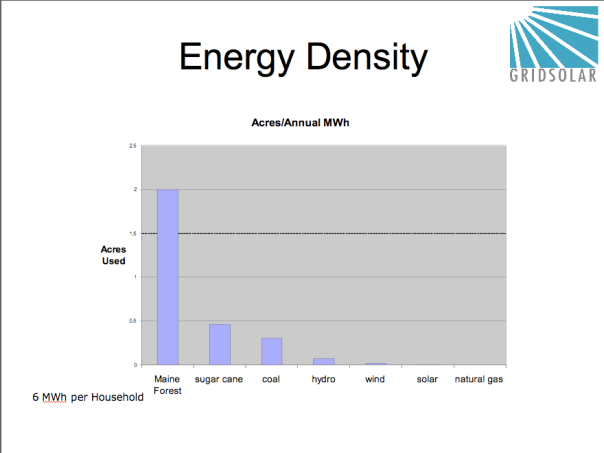I attended an Environmental Business Council (EBC) event at the Public Service of New Hampshire’s (PSNH) Northern Wood Power at Schiller Station in Portsmouth, New Hampshire on Tuesday. Station Manager Dick Despins gave us a comprehensive presentation and tour. PSNH’s 50 megawatt biomass facility is one of the largest renewal energy facilities in the U.S. including a nine story high, 110 feet tall, boiler. It is fed primarily “clean” wood chips from a distance of up to 100 miles in a geographical half circle as Schiller Station is on the coast.
Large tractor trailers, after being hydraulically raised to a 70 degree angle, release as much as 30 tons of wood chips into hoppers. The material is screened and anything bigger than a wood chip gets run through a “hog” that mashes larger pieces into a more digestible size. These chips are deposited into a mountain range of material stored under a large rectangular roof and dropped onto a moving conveyor using a sophisticated paddle conveyor. There is a magnetic screen that separates out barbed wire, nails, etc. Another mountainous configuration of material is stored outside. Together the indoor and outdoor storage provide a 10 day supply of wood chips.
The benefits include significantly lower emissions compared to the replaced coal boiler and PSNH dollars now flow to the local economy for wood chips rather than to the overseas economy for coal. Customer rates were not impacted. The $75 million investment is being funded, in large part, by renewable energy certificates (RECs) that provided $15 million in the first year of operation and currently provide $9 million per year at the $30 per REC rate.
The volume of material required to provide power to about 50,000 homes is staggering as the new fluidized-bed boiler uses 70 tons of wood chips per hour around the clock. I was overwhelmed to think what it would take to provide this type of renewable energy on a national scale. Using some rough math assuming 300 million people in the U.S. and an average two people per household, this facility is providing 1/3000th of the U.S.’s home power requirements. A friend of mine forwarded me the following energy density chart from GridSolar that plots the acres, in half acre increments, required to deliver an annual megawatt-hour (MWh) of different types of renewable energy. The coal and natural gas columns should be viewed separately as they are obviously not renewables.
